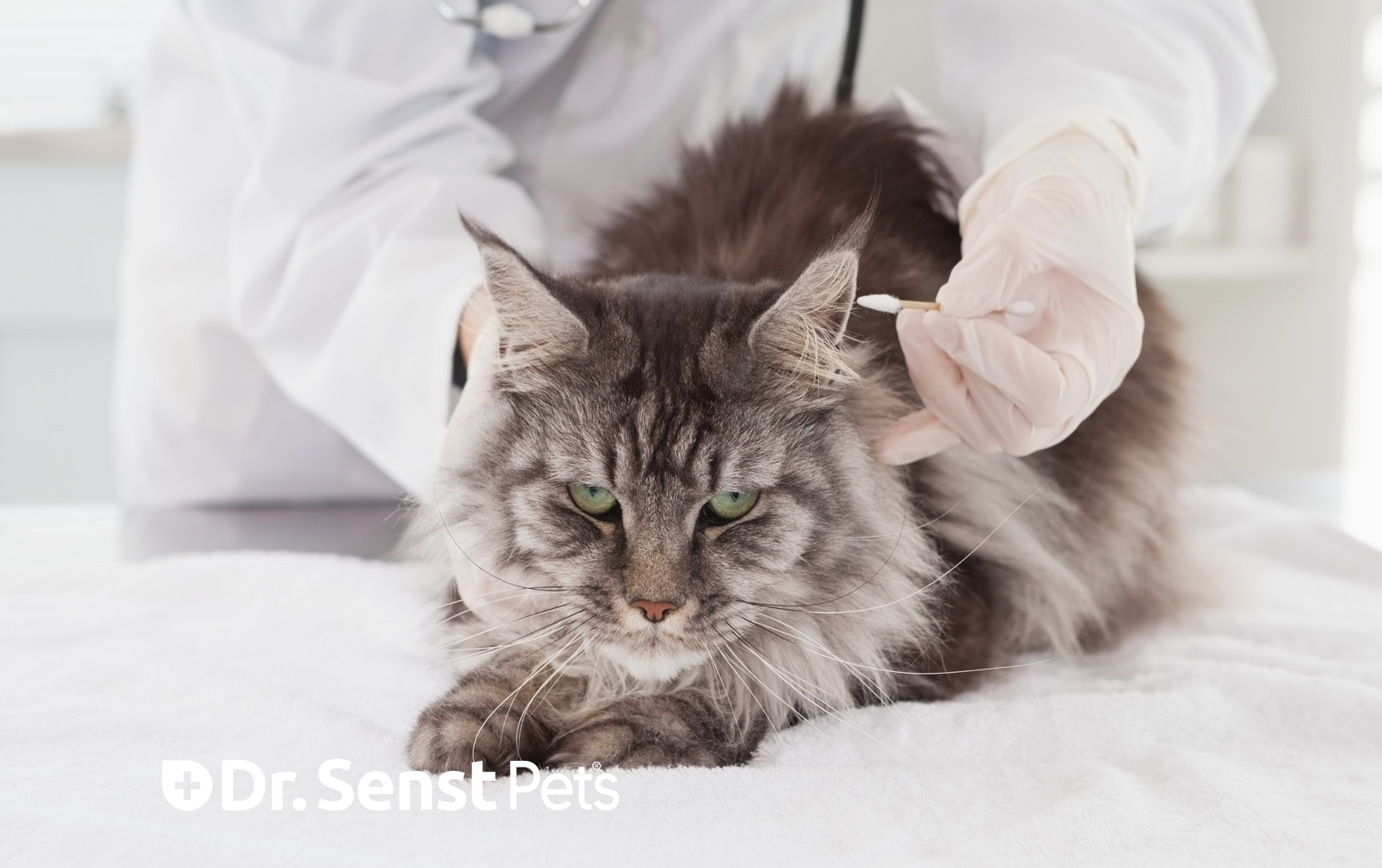
- by Dr.Thilo Senst
When Cat Ear Infections Require Veterinary Care: Signs and Treatments
- by Dr.Thilo Senst
Cat ear infections can be caused by various factors, including bacteria, yeast, ear mites, or even allergies. While some mild cases may resolve with proper home care, others can escalate quickly and lead to hearing loss or chronic pain. Understanding the signs and knowing when it’s time to take your cat to the vet can prevent these issues.
Identifying a cat ear infection early can save your feline from unnecessary discomfort. Common symptoms include:
According to the PDSA, about 15% of UK cat owners have reported their pets experiencing ear-related issues, making ear infections a relatively common problem in domestic cats.
Ear Mites:
Ear mites are a common cause of ear infections in cats, especially outdoor cats. These tiny parasites feed on ear wax and oils, leading to severe irritation and inflammation.
Bacterial and Yeast Infections:
Bacteria and yeast can thrive in a cat’s ear canal if the ears are moist or dirty. Poor hygiene or excess moisture from bathing can contribute to these infections.
Allergies:
Allergies to food or environmental factors like pollen can lead to ear infections. Cats with allergies often experience chronic ear inflammation, which creates a favourable environment for infections.
Foreign Objects:
A piece of grass or debris lodged in a cat’s ear can cause infection if not removed promptly.
Think of a cat’s ear as a humid environment—like a damp room in your house. Without proper ventilation and cleaning, bacteria and mould can grow, causing problems. Similarly, if your cat’s ears are not kept clean and dry, infections are likely to occur.
While some minor ear issues can be managed at home, certain symptoms indicate the need for professional veterinary care. These include:
Research by Cats Protection UK has found that 25% of cat owners seek veterinary care for ear infections only after the condition has worsened, underscoring the importance of early intervention.
Once a vet diagnoses your cat’s ear infection, they will recommend treatment based on the cause.
Prevention is always better than cure. Here are some tips to prevent ear infections in your cat:
Preventing cat ear infections is much like regular maintenance of a car. If you keep the engine clean and check for issues frequently, the car runs smoothly. Similarly, keeping your cat’s ears clean and dry prevents infections.
1. Can I use over-the-counter ear drops for my cat?
It’s best to consult your vet before using any ear drops, as the wrong treatment can worsen the infection.
2. How can I tell if my cat has ear mites?
Cats with ear mites typically have dark, coffee-ground-like debris in their ears and may scratch them excessively.
3. Are some cats more prone to ear infections?
Yes, cats with allergies or certain ear shapes (like folded ears) may be more prone to infections.
4. Can I clean my cat’s ears at home?
Yes, but only with a vet-approved cleaner. Be gentle and avoid using cotton swabs, as they can damage the ear canal.
To help keep your cat’s ears clean and infection-free, consider adding some of Dr. Senst’s pet care products to your routine:
By using these products and maintaining regular ear care, you can help prevent future infections and keep your cat’s ears healthy.
![]()
Enter your details & download our comprehensive 50+ page printable Dr. Senst Pet Care Planner completley FREE! - keep track of all your pet’s needs, from medical history and training to vet visits, grooming, diet, and more!










Share:
Can Dogs Eat Cauliflower? Benefits, Tips, and Health Insights
When Cat Care Becomes Urgent: Key Signs to Watch